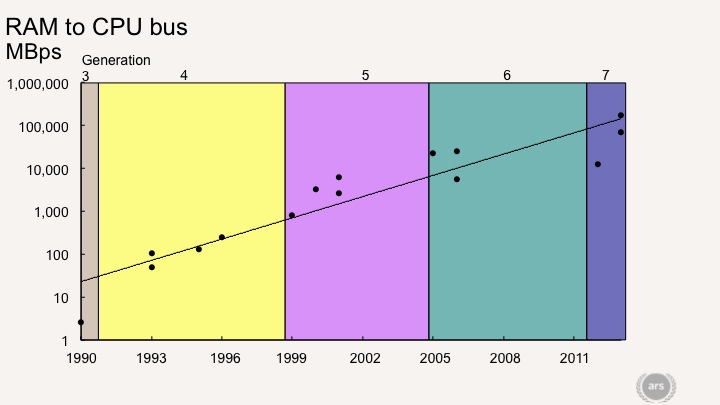DmitryKo
Veteran
we have no reason to assume it will be monolithic, meaning the GPU could be it’s own chiplet.
Agree. Holiday 2020 (i.e. November) launch looks the earliest possible now, since Navi slipped to end of 2019 and this should give AMD enough time to perfect their 7 nm process.a CPU chiplet makes a lot of sense for a launch system, especially if you go for a two tier setup.
And you don't need to lock down your CPU design with a branch from the mainline architecture that's two years old by the time the system launches.
I'd expect that a reasonably affordable package similar to Ryzen 3000, with:
1) a smaller dedicated memory IO die,
2) a 8-core Zen3 Milan die, and
3) one or two Navi dies delivering 10-12 TFLOPS in total
should be perfectly possible by late 2019.2) a 8-core Zen3 Milan die, and
3) one or two Navi dies delivering 10-12 TFLOPS in total
Maybe they could even manage to put HBM3 in that package, though this would be quite a stretch.
Given the price points we are working with I’m often baffled at the call for 10+ TF as being reasonable.
A console based on a SoC containing an AMD GPU has never had more than 1/2 the total TF capability of the top-end GPU from AMD at any time during this period.
This is due to the economics of using mid-range parts and techology to offset the costs of binning and packaging. And when they could pack several dies together or use a single integrated APU, this has always resulted in either much cheaper SKUs with the same or better specs, or significant performance gains for the same price.
The original Xbox, Xbox 360 and PS3 all used high-end GPU parts; and Xbox One X and PS4 Pro are arguably late attempts to repair performance issues of the original models under disguise of "4K" upscaling.
Newer features will define the generation not power output. Variable rate shading, mesh shaders/primitive, GPU side draw calls, RT, ML res, animation, physics and denoising.
Sure, but some of these improvements come with new pipeline stages (or a new API altogether), and this could require a costly redesign of the rendering engine - and maybe even a total revamp of artistic assets.
The latter is simply prohibitive for most game developers to undertake, as we've seen during similar technology transitions of the past.
Last edited:


